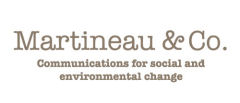
Ecocide Trial - The Sentence
Forum latest
Visit our discussion forumBlog latest
To view the latest blog, click here.Events latest
The Ecocide Trial on 30th September 2011 was a resounding success.
Click for links to press coverage.
Sentencing of the convicted CEOs took place on 31st March 2012.
Click for more
Our sponsors
After the Trial, the Sentence

Ecocide Trial at the Supreme Court of the United Kingdom, 30 September 2011 (Photo: Habie Schwarz)
In a most unusual step, sentencing of CEOs Robert Bannerman and John Tench was adjourned for a Restorative Justice Hearing following their convictions for Ecocide in the UK Supreme Court that took place 30 September 2011. The Hearing for the Sentence took place at the Institute for Democracy & Conflict Resolution (IDCR) at the University of Essex on the 31st of March 2012.
Under the proposed Ecocide Act, new provisions have been applied where Restorative Justice is an option for the parties. Initial representations were made to Judge Ian Lawrie QC by Prosecuting Barrister Michael Mansfield QC and Defence Barrister Adam Hiddleston.Liz Rivers who watched the Restorative Justice process wrote:
Both defendants from the original trial, Robin Bannerman and John Tench, were given the opportunity to take part in the process. Robin Bannerman agreed and John Tench declined. Also present in the process were:
- Oil Company Chief Sustainability Officer
- Pension Fund representative (representing shareholders)
- Spokesperson for the birds damaged by the ecocide
- Spokesperson for future generations
- Spokesperson for wider humanity
- Spokesperson for the Earth
- Representative of the indigenous people living in the area affected
The dialogue, skilfully facilitated by Lawrence Kershen Chair of the Restorative Justice Council, was an intense and dramatically gripping process to watch. I was particularly struck by the contribution from Gerald Amos representing the indigenous First Nations people of Northern British Columbia. His account of the detrimental impact of industrial activity on the way of life of his people and the land clearly had a profound effect on Robin Bannerman. He described tokenistic consultation processes his people had been subjected to where their views and concerns were blatantly disregarded and expressed himself with a palpable dignity that spoke volumes.
At times the exchanges were angry and intense and the discussion polarised into two positions:
- oil extraction from tar sands is unacceptably destructive and cannot be justified therefore must be stopped immediately, whatever the consequences
- oil extraction is simply meeting the energy needs of society, which everyone around the circle partakes in, therefore Robin Bannerman is being scapegoated for all the ills of capitalism and industrialisation
As the dialogue progressed, human connections formed between different members of the circle and attitudes started to shift. Also, as the focus of the questions shifted from the past to the future, ideas as to how the harm could be made good began to emerge. Robin Bannerman reported that all activity had been suspended on the site following his conviction. A number of innovative solutions were proposed including:
- appointing to the board a non-executive director with responsibility for sustainability, to be selected by sustainability organisation Forum for the Future
- funding a university chair to research the law of Ecocide
- setting up a working group including Robin Bannerman and Gerald Amos to decide on the future of the tar sands.
What did we learn?
The experiment proved that there is real potential for using Restorative Justice in conjunction with Ecocide. It enables dialogue, understanding, healing and creativity to emerge. It is about making whole again rather than reinforcing separation and fragmentation through punishment of perpetrators and exclusion from the process of victims.
It showed that it is possible to give voice to diverse and other-than-human elements of the system e.g. birds, wider humanity, future generations and the Earth itself in a meaningful way.
The process also showed ways in which both the Restorative Justice model and the proposed law of Ecocide need to be modified in order to be truly effective.
Restorative Justice
As the focus of the dialogue shifted to the future, a voice that seemed to be missing from the circle was that of a positive vision for the future where humanity can meet its energy needs without causing undue destruction to people and planet. An advocate for alternative forms of energy and the pathways to achieve these would be useful.
Government were not represented in the circle, and they are clearly a key element in the wider system as the creator of the policy and regulatory framework which licences the extraction activity. An underlying theme in the dialogue was "who holds the power?". The humanity/Earth participants within the circle saw Robin Bannerman/the oil company as holding the power to prevent Ecocide and were seeking to hold him to account. His response was that they were simply acting within the confines of a permitted regulatory framework, therefore it is government who should ultimately be held accountable and be lobbied for change. Having government in the circle would make it easier to determine where power and accountability ultimately lie.
Adding these two elements would go beyond the classic Restorative Justice model and draw in principles from Stakeholder Dialogue, which is an approach where stakeholders are brought together to create solutions to complex public policy issues, using dialogue techniques. It may be that a hybrid model drawing on elements of both Restorative Justice and Stakeholder Dialogue is what is needed to fully support the implementation of the law of Ecocide.
Ecocide
The process very clearly illustrated that it is not enough simply to prosecute and convict individual directors of Ecocide - the company needs to be a defendant too. The power of the Restorative Justice process in relation to Ecocide is in creating actions that the perpetrator will take to make good the harm. In most situations these need to be carried out by the company. If only the directors as individuals are prosecuted then there is a risk that the company could simply terminate their employment and avoid all future responsibility to make good the harm. Therefore the company as a separate legal entity needs to be a defendant and be accountable too.
It was only through the willingness of the campaign to "beta test" the use of Restorative Justice that these points became apparent.
Old paradigm "Newtonian" justice is about dissecting and analysing the different parts of a system, and punishing/removing the rogue elements. We are now transitioning to the realm of "quantum" justice, where the starting point is the whole system and exploring what needs to be done to restore the integrity of the whole. The combination of Ecocide and Restorative Justice is groundbreaking and innovative, where the power of each is amplified by its synergy with the other.
It may seem harsh to liken a corporate CEO to a Nazi war criminal, and of course a crucial distinction between war crimes and the law of Ecocide is that with the former it is necessary to show intention to cause harm, whereas with Ecocide it is enough to show that Ecocide happened as a consequence of the defendant's actions. At the moment environmental destruction is seen as an unfortunate side effect of industrial activity and the pursuit of profit, yet the rules of the game powerfully incentivise the latter and do little to deter causing damage. CEOs are rewarded for obeying the orders of the market. The Restorative Justice process brings home these impacts very powerfully to both the minds and hearts of decision makers and gives a voice to the victims in boardrooms around the world. With the implementation of the law of Ecocide supported by Restorative Justice it will become much harder to say "I was only obeying orders".
Liz Rivers is a mediator, leadership coach and former commercial litigation lawyer with global law firm Eversheds. She speaks and writes on the subject of Earth Rights and Wild Law and is one of the authors of "Exploring Wild Law: the philosophy of Earth Jurisprudence".

Michael Mansfield QC (Photo: Habie Schwarz)
When the judge heard the outcomes of the Restorative Justice process he took this into account in his sentencing and deferred Robin Bannerman's sentencing for 6 months to give him time to put the actions into practice. John Tench, who declined to participate, was sentenced to four years in prison.
The event was open to the public and interested organisations; there were breakout sessions, debates and speakers during the day to discuss the issues that arise during the Restorative Justice process.
The sentencing event was jointly organised by The Hamilton Group, which devised and managed the Ecocide Trial at the Supreme Court, and the Institute for Democracy & Conflict Resolution at the University of Essex.
Special guest presenter
Garth Lenz, Fellow of the International League of Conservation Photographers His work on the Alberta Tar Sands and boreal region of Canada was awarded first place in Social Documentary Net's competition, 'Ten Years After Nine-Eleven: Searching for a 21st Century Landscape.' A selection of this work is currently being shown at the PowerHouse Arena in New York and will soon be appearing in Aperture Foundation's 'Searching For A New Front Page', also in New York. Garth's large solo touring exhibition oif this material was premiered at the G2 Gallery in Los Angeles in February and March of 2011.
For more information on Garth Lenz, CLICK HERE





